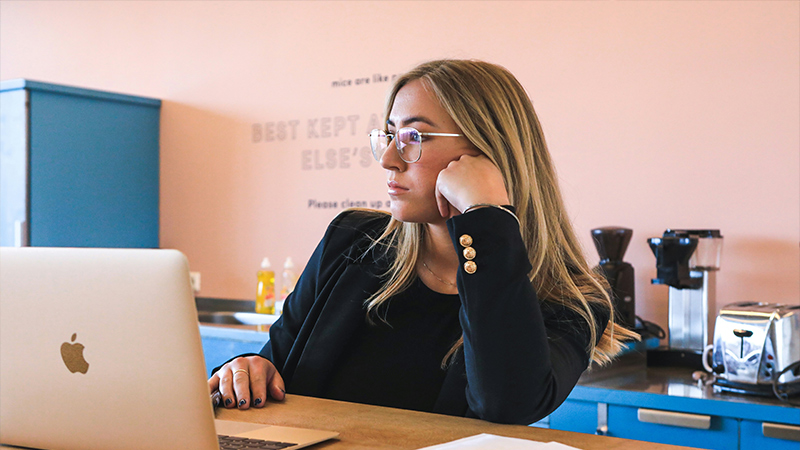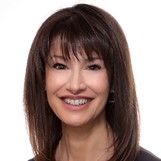An excerpt from Problem Solver on how we make decisions
By Cheryl Strauss Einhorn
Wednesday, February 7, 2024
Nonprofit leaders need a thoughtful way to make decisions, big and small. But we have never been taught to recognize how we make decisions personally and professionally, even as it slowly dawns on us that different people make decisions differently. And that can cause friction.
In the research for my new book, Problem Solver: Maximizing Your Strengths to Make Better Decisions, I have identified five “Problem Solver Profiles,” distinct approaches to making decisions that bring unique strengths and weaknesses, including cognitive biases that can impede clear thinking. By learning the psychology of your decision-making, and all five Problem Solver Profiles, you can make better decisions alone and with your teams.
* * *
I’d been invited to speak at a conference that took place in an octagonal building atop the summit of Powder Mountain, Utah. It was a sunny and clear winter day and strong, warm sunlight poured through the floor-to-ceiling windows in the room as I talked with the audience about being more mindful and deliberate in high-stakes decision-making.
I had just developed an app to help people identify what I was calling their “Problem Solver Profile,” PSP, the habits and patterns of behavior that drive our decision-making. My research and work on decision-making identified five different decision-making archetypes. Audience members began exploring the module, and the room got very quiet—for about fifteen minutes. When the module began to reveal attendees’ Problem Solver Profiles, the quiet was replaced by noisy, animated conversation.
At the end of my session, a young man—Ari—approached me, excited about the work we had done together and what he had learned about himself. He told me he was a Visionary, and that he recognized that the profile “makes so much sense to me. It really explains a lot of things.”
Ari was thrilled that his own sense of himself as a Visionary had been validated, particularly when he read that Visionaries are “drawn to exciting ideas” and can often get attached to “bold details”—his profile to a tee. But Ari also saw the weaknesses that are common blind spots for Visionaries. For example, the PSP module pointed out that Visionaries tend to lean on their imagination, and so don’t always do thorough research, racing toward their big ideas with limited, incomplete information.
Ari later told me that, “Upon reading the Visionary description, I knew right away that I needed to talk with my mentors about taking things to completion and about how I could achieve a greater degree of structure and organization in my approach to work.”
Like Ari, you too can experience the ah-ha that he had when unlocking your strengths and potential pitfalls as a decision-maker. The five Problem Solver Profiles that I had identified, and that I had shared with the conference attendees on that snow-capped mountain top, are:
Adventurers, Detectives, Listeners, Thinkers and Visionaries.
Adventurers tend to go with their gut reactions; Detectives like to follow the data; Listeners like to solicit the input of others; Thinkers like to identify multiple paths and outcomes; and Visionaries pride themselves on seeing pathways that others don’t. Each archetype has significant strengths but also potential blind spots, and a few key cognitive biases that may trip up a problem solver’s ability to fully appraise a situation. And of course, many of us can be more than one type of problem solver, but in almost all cases there is one dominant approach that we lean on.
But we don’t tend to think about how we make our decisions, we just make them—we go with our gut. Maybe that’s because we never learned how or because we have so many of them to make each and every day. Researchers tell us that we make up to 40,000 decisions in a day; Cornell University researchers recently concluded that we make over 200 decisions each day about food alone. So, it is surprising that until very recently schools didn’t even think to teach us about decision-making—and most still don’t—and we often don’t discuss or learn explicitly about decision-making at home.
How could knowing about us as decision-makers impact, for example, the 200-plus food-related decisions we make daily? What happens when you check into a hotel and are greeted with a fresh-from-the-oven chocolate chip cookie? If you’re an Adventurer, who likes to make decisions quickly and instinctively, you’ll likely grab the snack. But by recognizing that you tend to make decisions without caution—and that that’s not always the best way to make decisions—you might more easily say no to the sweet snack sitting on the hotel lobby counter. If you’re a Listener, who tends to heavily weigh others’ opinions, you might hear those other voices and skip the cookie, especially if what you’ve been hearing is that you could shed a few pounds. But that may not be what you want—or even should—do. Understanding your Listener blind spots might help you learn to quiet those outside voices, better channel your own inner voice—and enjoy a delicious cookie!
The consequences of grabbing the sweet treat at the hotel check-in counter may be minimal, but to decide on your next car purchase—or which hospital to go to for surgery—with the same “go from the gut” attitude has much greater consequences.
In our lives we face many high stakes decisions, ones where the outcome is unknown. The decision is likely to have a long-term impact on our lives and the price for getting it wrong could be costly. Knowing more about our decision tendencies can be life changing. Do we want to do what we’ve done before? That’s the basic question we face for almost every decision because that is how our minds operate, from the reel of our past experiences. It’s all our mind knows and so it uses those memories to guide our future. Yet to answer that fundamental question about whether we want to repeat a prior decision requires several pieces of knowledge: How do we engage with our decisions? How have those decisions turned out? What can we do to make them better?
The truth is our decisions are the only thing that we really have control over how we choose matters. Yet we often end up with choices that are made by others, because we’ve—knowingly or unknowingly—abdicated the control over a decision. And frequently, we simply didn’t notice that a decision is before us.
So why haven’t we identified our decision-making style? We identify ourselves with all sorts of groups and categories—our race, religion, culture, astrological sign, or geographical affiliation, the sports teams we root for, the hair care products we swear by the news we subscribe to (and the news we would never subscribe to!) …yet we don’t categorize what type of decision-maker we are.
Many of the categories we choose as labels are predetermined for us by our families, our friends, and where we live. Our religious affiliation is often handed to us by our parents; the sports teams we root for are usually determined by where we live and who our friends root for. Likewise for the region we claim as home, such as for example, the South or Midwest in the U.S. So much of this identity formation happens when we are young, and we take it on and take pride in it without thinking about it—and that’s not a bad thing. Our groups give us multiple ways to belong, and belonging is a basic human instinct.
Other kinds of categories, however, require us to be proactive and introspective—to study and analyze our own behavior and emotions. These kinds of group identities take time and effort to explore, whether they are about our passions, politics or love language, and that exploration can be uncomfortable. But it’s important work, work that can help us to better realize our potential and live more satisfying lives. Schools and companies are just beginning to recognize the value of this foundational decision-making spadework and are doing it for a variety of reasons; it provides pathways to understanding and navigating learning differences, which can provide customized learning tools, professional development, and team building.
But often this introspection and analysis doesn’t begin at home, in grade schools, or in our foundational experiences, where we would benefit from being taught to think consciously about how we learn, how we form friendships, even how we give and receive love.
The idea that we don’t necessarily share our decision approaches tends to dawn on us mostly over time—and without a manual for what to do with those differences or how to bridge them.
By exploring the different Problem Solver Profiles and their implications, we can see that we often start our problem-solving from different entry points than others and that we value different aspects of the process. This new awareness can provide us with a more open mindset to make decisions that foster positive relationships, promote nurturing environments that increase belonging and inclusion, and provide us with rich learning experiences and knowledge development to assist us in better tackling life’s challenges together.
Read more stories by Cheryl Strauss Einhorn.
Cheryl Strauss Einhorn is the creator of the AREA Method, a decision-making system for individuals, companies, and nonprofits to solve complex problems. Cheryl is the founder of the decision-sciences company Decisive, offering coaching, leadership training, and workshops, and teaches at Cornell University. Read more stories by Cheryl Strauss Einhorn.
Explore IIL’s Design Thinking Courses here!
Disclaimer: The ideas, views, and opinions expressed in this article are those of the author and do not necessarily reflect the views of International Institute for Learning or any entities they represent.



